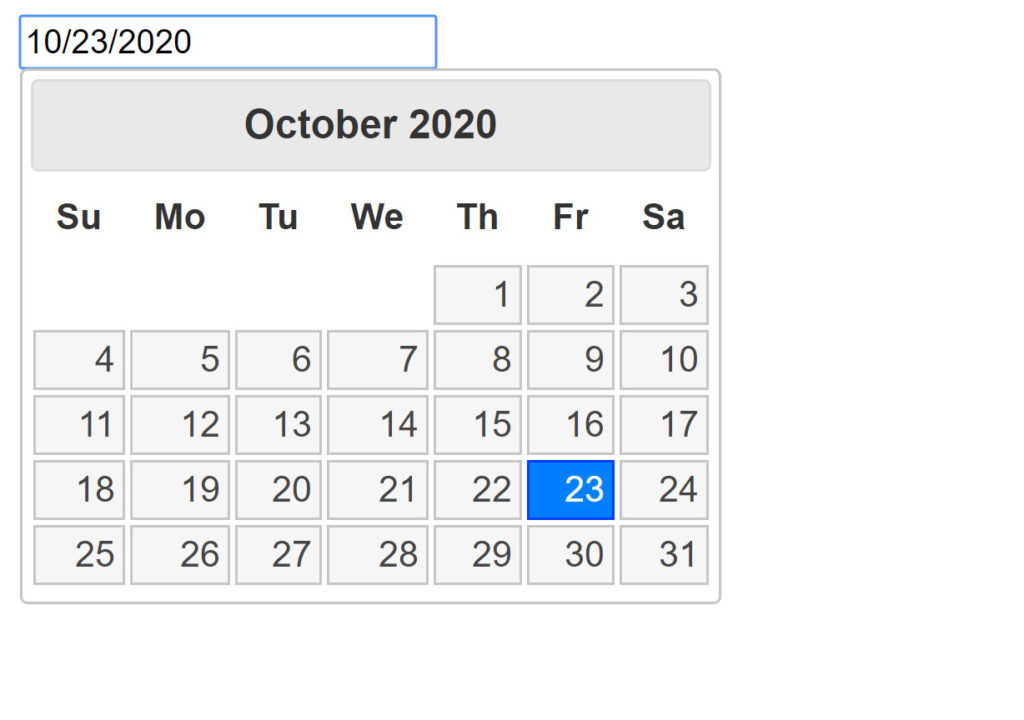
You need to replace the strings "mm", "dd", "yy" with the respective month, day and year values from the format string passed in the argument. So in this section, let's create a utility function that will return the date in the format specified in the function argument: const today = new Date() To tackle this problem, it would be better to create a reusable function so that it can be used across multiple projects. It could be in yy/dd/mm or yyyy-dd-mm format, or something similar. Custom Date Formatter FunctionĪpart from the formats mentioned in the above section, your application might have a different format for data. You can find the complete reference for the Date methods in the MDN documentation. The toLocaleDateString() method returns the date in a locality-sensitive format: today.toLocaleDateString() // "" The toUTCString() method returns the date in UTC timezone format: today.toUTCString() // "Sat, 18:30:00 GMT"
#JAVASCRIPT DATE SETDATE ISO#
The toISOString() method returns the date which follows the ISO 8601 Extended Format: today.toISOString() // "T18:30:00.000Z"

The toDateString() method returns the date in a human readable format: today.toDateString() // "Sun Jun 14 2020" You can format the date into multiple formats (GMT, ISO, and so on) using the methods of the Date object. You can pass in the milliseconds returned from the now() method into the Date constructor to instantiate a new Date object: const timeElapsed = Date.now() Ĭonst today = new Date(timeElapsed) Formatting The Date It returns the value in milliseconds that represents the time elapsed since the Epoch. Now() is a static method of the Date object. Hence the addition of 1 to normalize the month's value. One point to note about the getMonth() method is that it returns 0-indexed values (0-11) where 0 is for January and 11 for December. The getMonth() method returns the month of the specified date. The getDate() method returns the current day of the month (1-31). Similarly, there are methods for getting the current day of the month and the current month: const today = date.getDate() Ĭonst currentMonth = date.getMonth() + 1 The getFullYear() method returns the year of the specified date in the Date constructor: const currentYear = date.getFullYear() To get the current year, use the getFullYear() instance method of the Date object. You can pass a date string to the Date constructor to create an object for the specified date: const date = new Date('Jul 12 2011') The Date object contains a Number that represents milliseconds passed since the Epoch, that is 1 January 1970. To create a new instance of the Date object, use the new keyword: const date = new Date()


JavaScript has a built-in Date object that stores the date and time and provides methods for handling them.
#JAVASCRIPT DATE SETDATE HOW TO#
In this guide, you will learn how to get the current date in various formats in JavaScript. Many applications you build will have some sort of a date component, whether it's the creation date of a resource, or the timestamp of an activity.ĭealing with date and timestamp formatting can be exhausting.


 0 kommentar(er)
0 kommentar(er)
